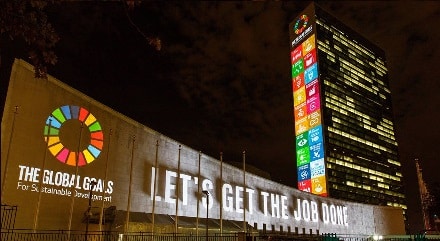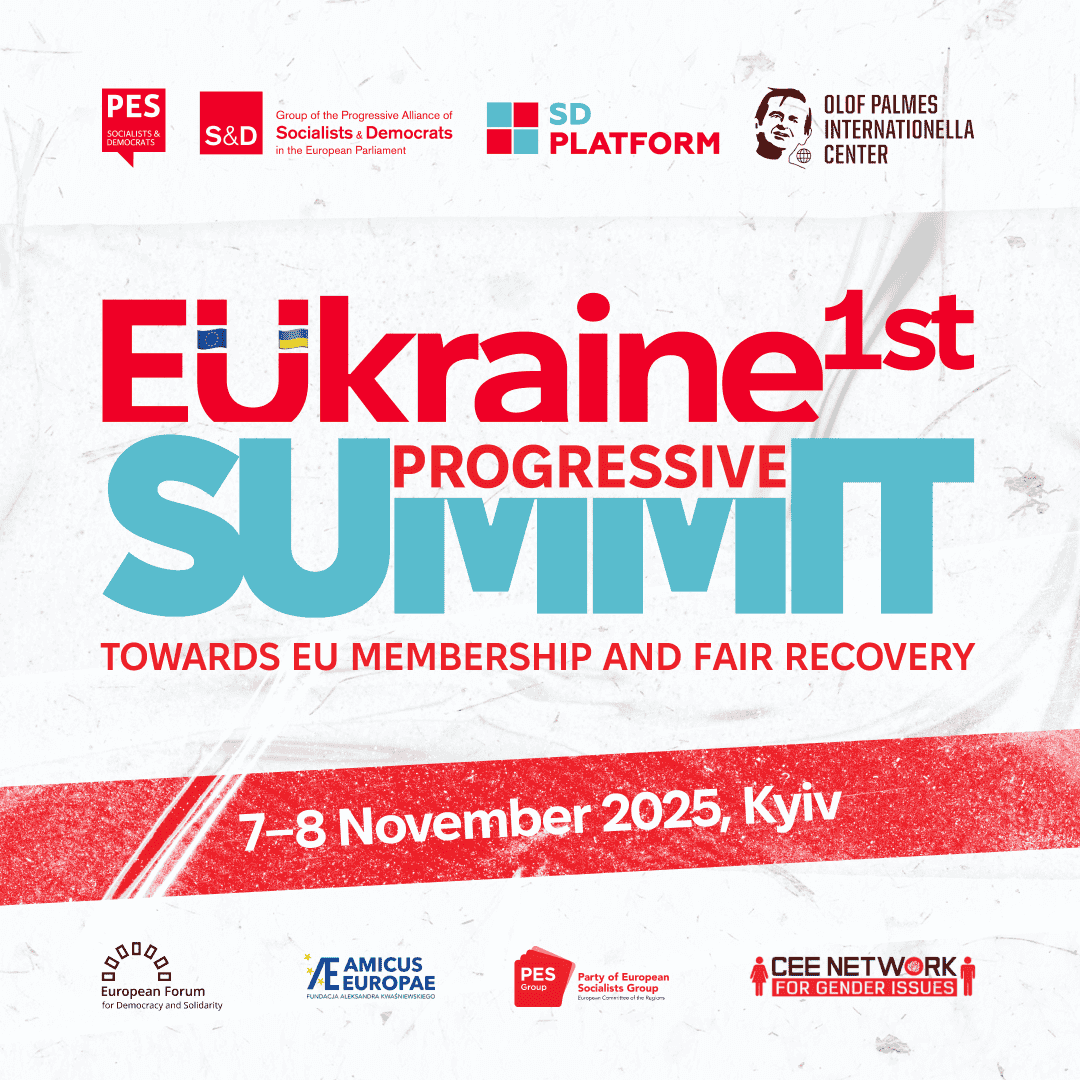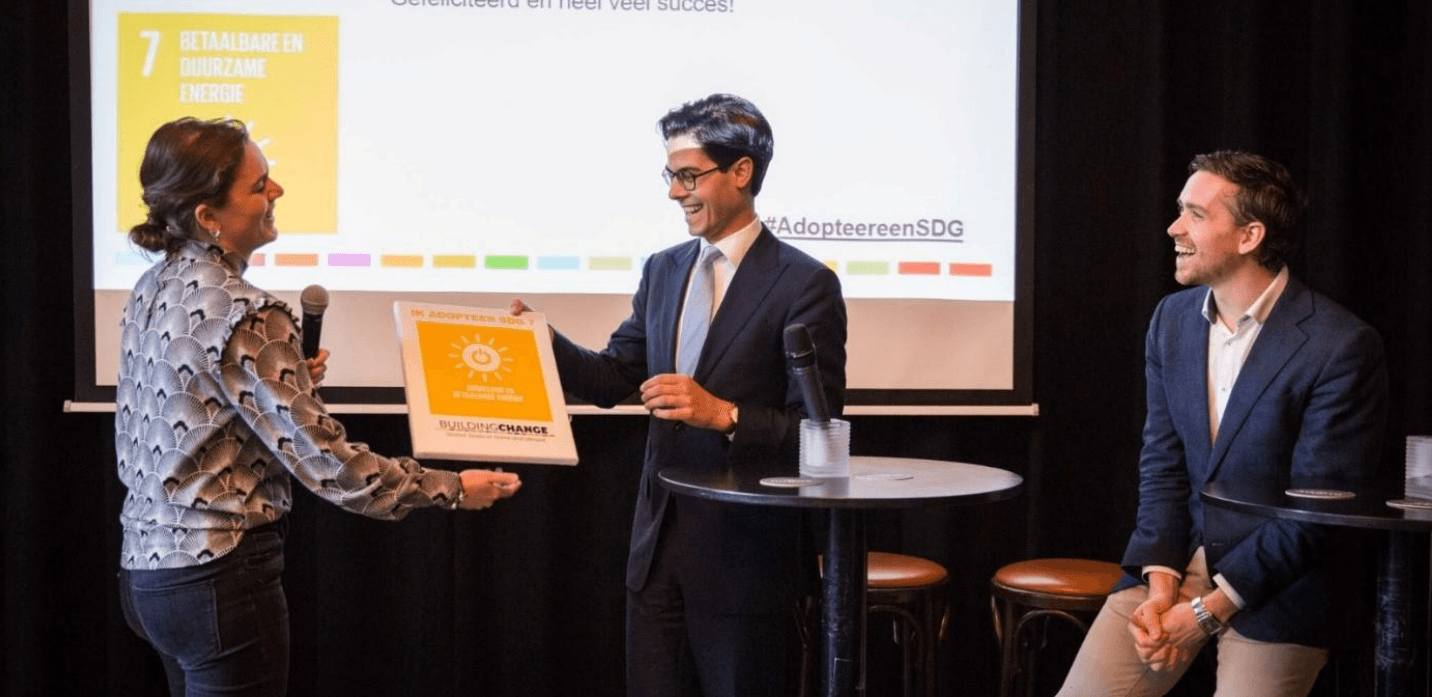Great strides are being made from Building Change, the SDG test has finally been launched! This tool allows to monitor the international impacts of Dutch policies on SDGs. As a result, all Dutch policies and legislation from now on must take into account any impacts in developing countries and gender. Read on to find out how this came about and how it works.
What do the SDGs mean?
In 2015, the United Nations drew up a list of 17 Sustainable Development Goals (SDGs) to be achieved by 2030. In setting this agenda, member states strive for a better, more sustainable and just world, to end poverty, injustice and inequality. Goal 10, for instance, stands for reducing inequality; inequality in income, inequality in opportunity and inequality in freedom. There are also goals aimed at, for example, conservation of nature, climate action, gender equality. The 17 goals are also closely interlinked and they support each other. Goal 8, decent work and economic growth, for example, also contributes to equality; income growth and economic equality. Roughly speaking, the 17 goals can be divided into environmental, economic and social areas.
The Netherlands has also endorsed these goals and is working on economic improvement, sustainability and promoting equality at home as well as through its Foreign Trade and Development Cooperation Policy. Very nice! But it can also be the case that Dutch policy unintentionally has a negative impact on the sustainable development of other countries, often developing countries. It may sound crazy that, while working towards a sustainable goal, there can be negative consequences for developing countries at the same time. Consider, for example, plantations that would be built (in large quantities) by the Netherlands in Burkina Faso. It would create some jobs, but it would also make it difficult for local farmers to compete. This could hold back local economic growth, resulting in greater inequality.
It is therefore very important to be mindful of any negative consequences of Dutch actions, and to make this transparent. After all, we are not supposed to give with our one hand and then take it back with our other.
Building Change
We can mitigate these negative effects using policy coherence. From this principle, Building Change emerged, an enthusiastic collaboration between FMS, Partos and Word and Deed. We work intensively together to put policy coherence for development firmly on the map in the Netherlands. Together, we advocate for fair Dutch policies that do not negatively impact developing countries. Our vision? A fair ambitious implementation of the SDGs, led by a positive, enabling government. Indeed, we see the SDG agenda as the framework for policy coherence, bringing together 17 different development goals.
To achieve the SDGs, it is essential to have strong collaboration with other organisations and agencies. So too with politicians. Sometimes it is necessary to get a push, extra encouragement, provide information or direction where needed. This is how the 'Adopt an SDG' campaign was set up.
The 'Adopt an SDG campaign'
The SDGs were adopted in 2015, but were not immediately alive in the House of Representatives, and certainly not outside the Foreign Trade and Development Cooperation Committee. This is despite the fact that this agenda touches on so many different policy areas. To encourage this, Building Change launched the 'Adopt an SDG' campaign in 2017. As many as 26 MPs adopted one or more SDGs, from 8 political groups and working in different parliamentary committees. We brought together a broad coalition of organisations with expertise on the various goals with politicians. Some 40 civil society organisations followed the politicians, providing them with information where necessary. The SDGs have come to life in the Lower House: a great Building Change success!
The creation of the SDG test
In the same period, Building Change also started working on the proposal for an SDG test. In our view, the importance of the SDGs lies in the coherence between the goals: if when implementing one, the other is also taken into account, only then do you really make great strides towards policy coherence. We also wanted to make the various ministries aware of the possible effects of their policies on the SDGs and specifically on the development of developing countries through those goals.
It was not only Building Change that saw the introduction of an SDG test, but Roelof van Laar (former PvdA MP) was also enthusiastic about it. He was the first to advocate for the test in 2016. Later, his successor Kirsten van den Hul (PvdA) and Elbert Dijkgraaf (SGP) also picked it up. During the Foreign Trade and Development Cooperation budget debates, the two made the case for the test. Brand-new minister Kaag liked the idea and took it up.
With success: since the beginning of 2019, the SDG test is a reality! New policies, laws and regulations are now tested for their contribution to the achievement of the SDGs and whether they do not actually have an unintended negative impact on them. The SDGs are included in the Integrated Assessment Framework (IAK). Government officials use this to determine the usefulness, necessity, effectiveness and consequences of policies, laws and regulations. The IAK tests laws and regulations via 7 questions to see if they meet various quality requirements. The SDGs are now included in this, with an extra focus on the effects on developing countries and the effects on gender.
How next?
The success of this test hinges on its application. Therefore, Building Change, and with us the dozens of civil society organisations affiliated to the 'Adopt an SDG' campaign, will monitor the use of the test. In addition, the test gives MPs additional opportunities to challenge ministers on the contribution of their new proposals to achieving the SDGs. A great opportunity to put policy coherence for development better on the map!




